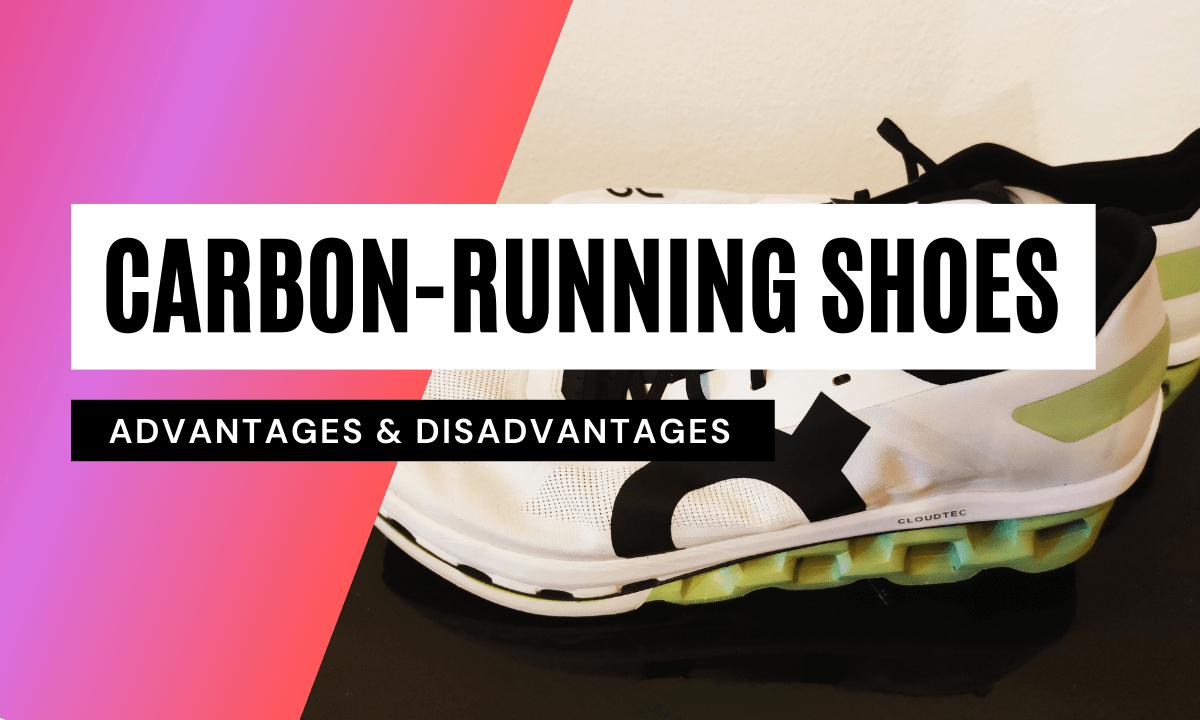Running shoes with carbon plates have revolutionized the running shoe market in recent years.
This is because these shoes have ensured that almost all world records over the long-distance disciplines on the road have been improved in recent years. Amateur runners are also increasingly affording these models, although not all runners will actually benefit from this technology.
We have taken a closer look at the technology of carbon shoes and explain in more detail the advantages and disadvantages of these shoes. But first, of course, we would like to explain the difference between classic running shoes and carbon running shoes.
What are carbon running shoes?
These running shoes have one or more rigid plates made of carbon built into the midsole. Why carbon, of all things, is used as the technology for this can be easily explained. Because carbon can withstand heavy loads on the one hand, but on the other hand the material is very light. And running shoes should naturally be as light as possible, at least in competition. Thanks to this carbon plate, energy recovery is increased with every step, which in turn improves running dynamics. As a result, we can achieve a slightly faster pace with the same amount of energy compared to "normal" running shoes.
But now let's get to the actual topic of the article. The arguments for and against buying carbon running shoes.
Advantages of carbon running shoes
1) Running shoes with carbon plates save energy
The extremely stiff carbon plates have a great advantage during the rolling process. This is because it keeps the joints of the toes stiff, which can prevent the toes from curling during the rolling process. This saves some energy with every running step.
The reactive cushioning material also ensures that some energy is returned to the runner with every step. Simply put, the amount of muscle effort can be somewhat reduced when running in shoes with carbon plates compared to traditional lightweight competition shoes.
2) Carbon running shoes make you faster
Top runners estimate a time savings of about two to three seconds per kilometer over long distances. That doesn't sound like a lot, but in elite sports it's a world away. For example, someone who used to run a marathon in 2:04 hours now has the opportunity to run a time of 2:02 hours with the carbon shoes. At major city marathons, that could mean the difference between winning or finishing outside the top ranks.
Meanwhile, nearly all podium finishes in major marathon events are achieved by athletes wearing carbon running shoes. However, that's hardly surprising anyway, since hardly any professionals want to do without this technology in long running competitions.
The training app Strava was able to determine in an analysis of 500,000 training runs that athletes with the Nike Vaporfly ran the marathon on average three percent faster than all other athletes. The "Nike Vaporfly 4%" was the first running shoe with a carbon plate to be worn en masse by top runners. The effect was proven in both professionals and amateurs.
Marathon world record holder Eliud Kipchoge first ran with the Nike Vaporfly 4% and then with the Nike Alphafly Next%. It was these models that enabled him to break the marathon world record and subsequently also become the first person in the world to complete the 42.195 kilometers in under two hours.
Paula Radcliffe's marathon world record, long considered unattainable among women, was also pulverized in 2019 by Brigid Kosgei. She ran a time of 2:14:04 hours at the Chicago Marathon in carbon shoes, 81 seconds under the old record. Incidentally, with this time she would have missed the 2016 Olympic qualifying limit for men (!!!) over the marathon distance by just four seconds.
3) Improved running economy
Thanks to the improved energy recovery, running economy, i.e. running style, is of course positively influenced. This can be very beneficial in a marathon towards the end of the race. In addition, this could also somewhat reduce the risk of injury while running.
Disadvantages of carbon running shoes
1) Much more expensive than traditional lightweight shoes.
Normally, nothing goes under 200 euros. With the introduction of carbon running shoes, there has been a massive price jump in the running shoe market. Most models are available for around 250 euros, which is at least 100 euros more expensive than traditional lightweight shoes, of which there are enough models in the 100 to 150 euro price range. In some cases, carbon shoes are even sold for around 300 euros.
2) Extremely short durability
The price-benefit ratio becomes even more drastic when durability is taken into account. According to previous experience, carbon running shoes wear out after 250 to 300 kilometers. That means the positive effect is gone after only 300 kilometers. The classic lightweight shoes, on the other hand, have at least twice as long a service life. Some running shoes can even be worn for 1,000 kilometers, which is more than 3 times as long as the carbon models.
3) The positive effects only take effect at a high running speed
If you run a marathon in four hours, you should quickly forget about carbon shoes. Due to the significantly longer ground contact time at slower speeds, the positive effects described above are almost impossible. The managing director of the running store RunInc and former top marathon runner Michael Buchleitner said during the TV coverage of the Vienna Marathon that a running pace of at least 4:00 minutes per kilometer is required for positive effects to be expected from running shoes with carbon soles. This means that it only becomes really interesting if you as a runner are aiming for a marathon time under three hours.
4) Only for a very small target group actually significantly performance enhancing.
So in summary: Carbon running shoes are significantly more expensive, last less time and only have a significant positive effect on performance above a certain speed. Accordingly, the shoes are out of the question for many runners. Budget and performance are the big spoilers. Likewise, it is an open question whether carbon shoes have similarly large positive effects for short race distances (e.g. 10 kilometers), since the factor of energy saved by the shoes plays a lesser role for such a short race duration. However, it speaks more in favor of your use of carbon shoes for short running distances, after all, in recent years, the world records for 10 kilometers and 5 kilometers have also been improved, in some cases significantly.
5) Increased risk of injury
This stiff carbon plate can drastically increase the risk of injury, especially for less well-trained athletes. This is because the stiff carbon sole puts more strain on the muscles in the calves and also puts above-average strain on the Achilles tendon. Therefore, such shoes should be worn as rarely as possible. So only during important competitions and fast training sessions.
6) Not all shoes are allowed
At regional races, no one will pay attention to whether the shoes are officially approved for competitions. But there are also some running shoes with carbon soles that are not officially approved for competitions. This is because the World Athletics Association has set a maximum sole thickness of 40 millimeters. Anyone who followed the Vienna City Marathon 2021 more closely will have noticed that the original winner was disqualified just a few minutes after the race. He had been wearing shoes with a sole thickness of 50 millimeters. In addition, no prototypes may be worn in the race, only models that have been on sale to the public for at least four months.
Summary: Advantages and disadvantages of carbon running shoes
Advantages
- Energy-saving
- Better running performance
- Improved running economy
Disadvantages
- High price
- Short life span
- Better running performance only at high speed
- Only for a small target group actually performance improving
- Higher risk of injury
- Some models are not approved for competition.
Our conclusion: if you can run at a pace of under four minutes per kilometer for longer and have enough budget for running shoes, you will most likely be able to improve your running performance somewhat with carbon running shoes. The lower the performance level, the lower the chances of gaining an advantage and the higher the risk that your use of such shoes may even result in injury.
Overview of all carbon shoes: All current carbon running shoes



![Running in Luxembourg - All Races 2024 [Running Calendar] Running Races in Luxembourg](/images/thumbnails/raxo/ramp/tb-w300-h100-crop-int-2373fabfbe5f9309073a91cb7ee021c3.jpg)





Kommentare zum Artikel
Alle Kommentare und Meinungen zu diesem Beitrag